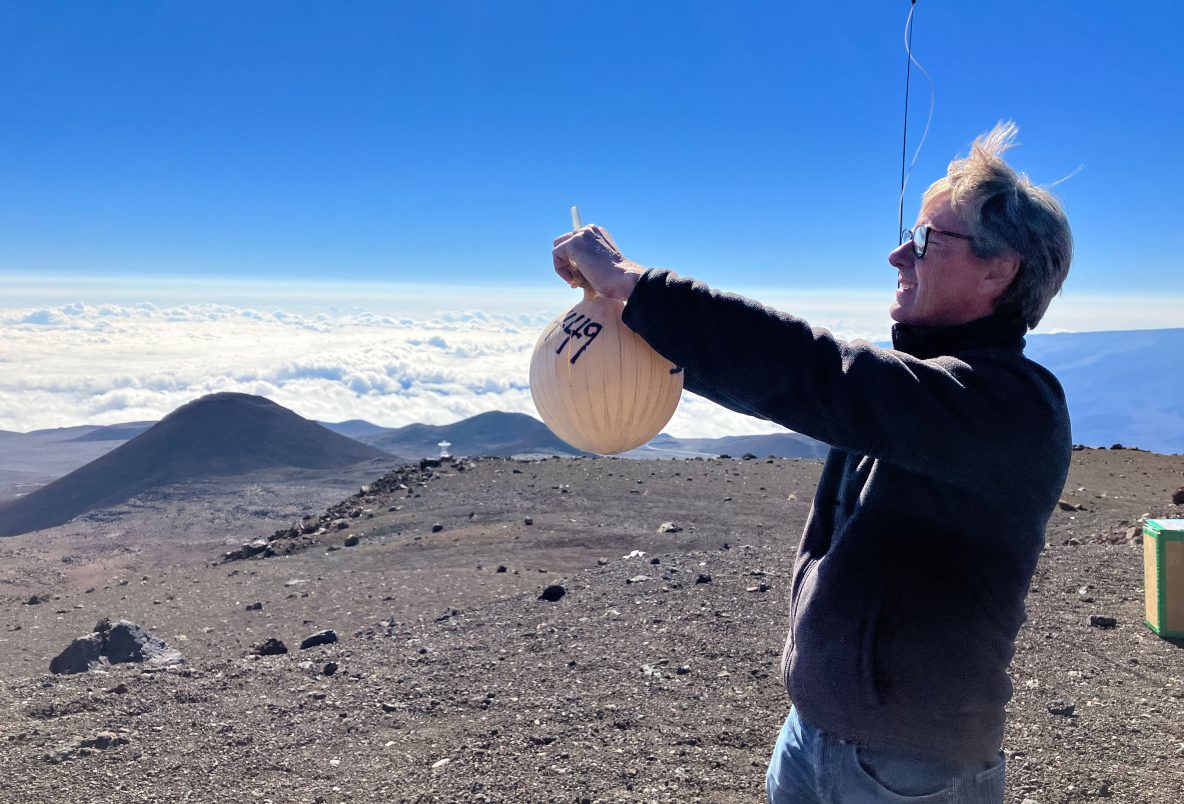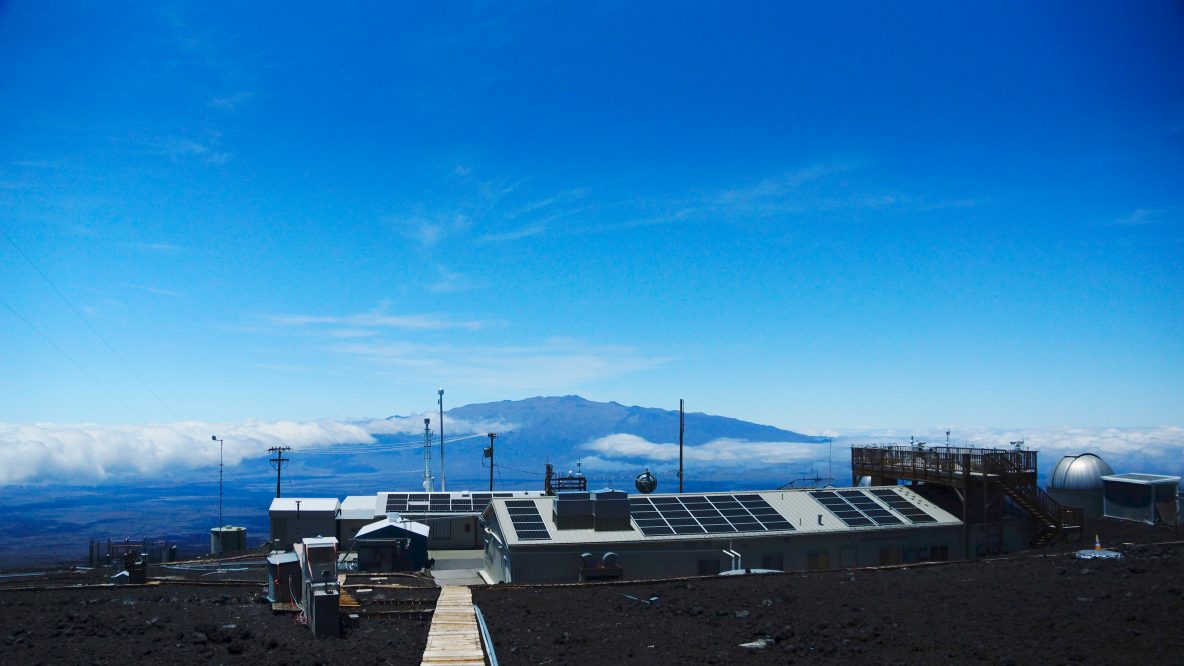In 2024, the yearly average level of the greenhouse gas carbon dioxide (CO2) rose faster over the prior year than ever before in the 67-year-old Keeling Curve record. When researchers took the average readings for all 12 months in 2024, the average was 3.58 parts per million (ppm) higher than for 2023’s average. That broke the record for largest jump … Read More
Note on recent increased day-to-day variability
An observer of Keeling Curve data queried last week why there’s such a spread in atmospheric CO2 measurements this year. In response, Scripps CO2 Program Director Ralph Keeling offered the following: “It’s true the Mauna Loa Observatory (MLO) record typically has considerable day-to-day variability in the first half of the calendar year. It’s also true that this type of variability … Read More
Largest Year–Over-Year Gain in Keeling Curve Set in March
New record for largest 12-month gain in carbon dioxide concentration ever observed The monthly average concentration of carbon dioxide in the atmosphere measured at NOAA’s Mauna Loa Observatory in March 2024 was 4.7 parts per million (ppm) higher than that recorded in March 2023, setting a new record and revealing the increasing pace of CO2 addition to the atmosphere by … Read More
On This Week’s Record High CO2 Readings at Mauna Loa
On Saturday, Feb. 3, the daily Keeling Curve record was broken when instruments at Mauna Loa detected a carbon dioxide concentration of 426.5 parts per million (ppm). It was the first time in the modern record a daily reading had exceeded 425 ppm, though the annual peak does not typically take place until May. Since then, several daily readings have … Read More
Improved Model of the Carbon Cycle Can Help Verify Reported Emissions
Researchers at UC San Diego’s Scripps Institution of Oceanography have created a more accurate model of global carbon cycling. The model better accounts for the contributions of Earth’s terrestrial ecosystems to atmospheric concentrations of the greenhouse gas carbon dioxide, a major source of uncertainty for scientists tallying global emissions. The model’s improved accuracy could help humanity monitor and verify reported … Read More
Scripps CO2 Instrument at Mauna Loa Observatory Back in Action
Helicopter delivers photovoltaic rails, electrical conduit, and solar panels to Mauna Loa Observatory. Photo: Scott Prestien/EPC We are happy to report that measurements by the Scripps CO2 program resumed at Mauna Loa Observatory on March 9. The CO2 analyzer is being powered with a solar power/battery system installed by NOAA staff at the Mauna Loa Observatory using helicopter access. The … Read More
Update on CO2 readings commencing at Maunakea
(Above: Ralph Keeling takes an air sample at Maunakea Dec. 21, 2022) The Keeling Curve data stream was interrupted by the eruption of Mauna Loa on Nov. 28. To help close this data gap, scientists at Scripps Institution of Oceanography at UC San Diego worked with partners from NOAA and the Maunakea Observatory partners to install a nearly-identical carbon dioxide … Read More
Historic Keeling Curve Observation Interrupted by Volcanic Eruption
Photo: NOAA The carbon dioxide measurement equipment that maintains the famed Keeling Curve record lost power at 6:30 p.m. Nov. 28 and is not currently recording data. Mauna Loa, the world’s largest active volcano, erupted at 1:30 a.m. PST on Nov. 28 after weeks of heightened internal activity. Researchers at Scripps Institution of Oceanography at UC San Diego, which … Read More
Why COVID Didn’t Have a Bigger Effect on CO2 Emissions
The COVID-19 pandemic caused carbon dioxide (CO2) emissions from fossil fuels to drop in 2020 by seven percent compared to 2019. This decrease in emissions slowed the increase in atmospheric CO2 compared to what would have occurred without the pandemic. It was too small and too brief, however, to stand out strongly in individual CO2 records, such as the Keeling … Read More
Statement from Scripps Oceanography, UK Met Office on Record High CO2 Buildup
Researchers Richard Betts from the UK Met Office Hadley Centre and Ralph Keeling of Scripps Institution of Oceanography, UC San Diego issued the following statement today regarding new record levels of CO2 in the atmosphere in the context of the Covid-19 pandemic. The full text of the statement with graphics is available with graphics through this link and is included … Read More






